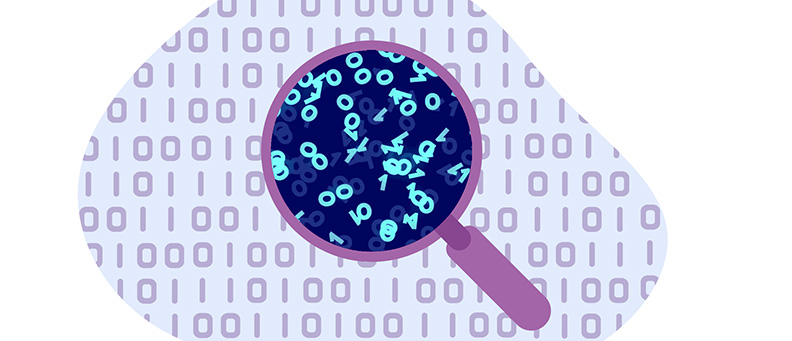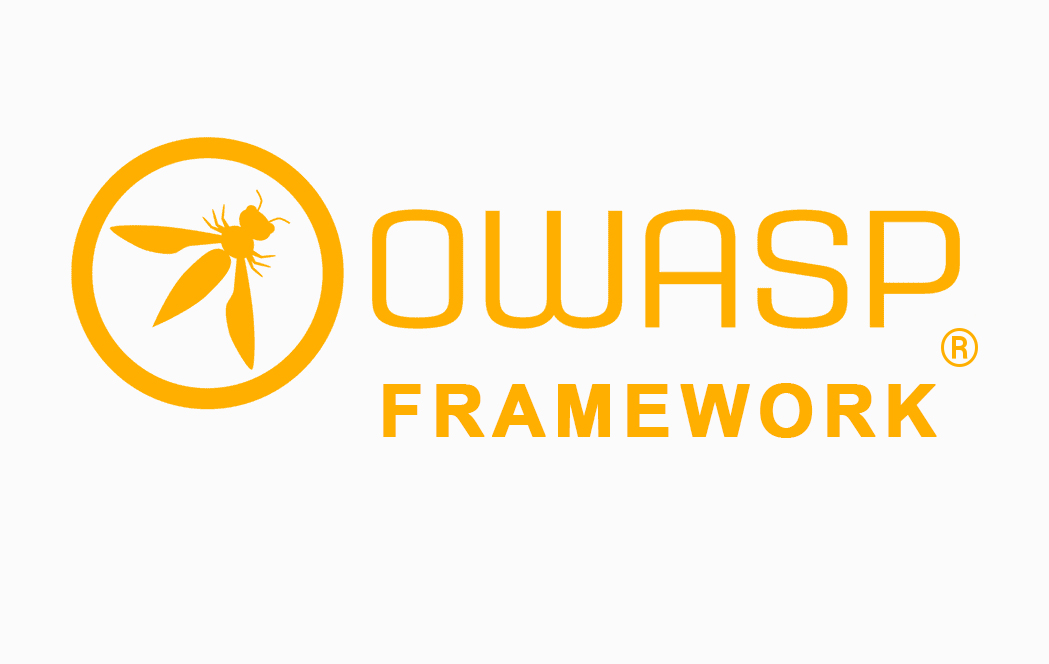A Detailed Guide to Code Coverage, Code Testing and Software Engineering
In software testing, test coverage and code coverage are essential metrics. They are significant benchmarks by which to measure the effectiveness of the codebase. This tutorial explains what code coverage means, how it works and how it serves the developers’ purpose.
Table of contents:
- What is code coverage?
- How do code coverages work?
- Why use code coverage?
- Methods of code coverage: types of coverage
- Statement coverage
- Branch coverage
- Decision coverage
- Condition coverage
- Loop coverage
- What about line coverage?
- Finite state machine coverage
- Which type of code coverage should you choose?
- Code coverage vs functional coverage
- Code coverage tools
- Advantages of code coverage
- What are the disadvantages of code coverage
- What is test coverage in software testing?
- How to perform test coverage?
What is Code Coverage?

Code coverage is the percentage of a code that is covered by automated tests. Code coverage measurements determine which statements in a body of code have been executed using a test run and which statements have not. Generally, a code coverage system collects information and data about the running program and then combines that with source information to report the test suite’s code coverage.
Code coverage is a part of a feedback loop in the software development process. As unit tears are developed, code coverage shows aspects of the code that might not be adequately tested and need additional testing. This loop continues till unit coverage meets some specified target.
How do code coverages work?
There exist several approaches to the measurement of code coverage. However, if we consider broadly, here are the three main approaches.
| Intermediate code instrumentation | In this approach, compiled files get instrumented by adding new byte codes, and after that, the new class gets generated. |
| Source code instrumentation | Source code instrumentation adds the statements of instrumentation to the source code. Then it compiles the code together with the normal compile tool to get you an assembly that is instrumented. |
| Runtime information collection | Here we gather the information from the runtime environment because code is executed to determine the coverage information. |
Source code instrumentation is widely used because even if it requires developers to perform an instrumented build, source code instrumentation generates the most accurate coverage measurement for the least runtime performance overhead.
As the code being tested executes, code coverage systems collect information about the statements that have been executed. This information is used as the basis of reports. In addition to these mechanisms, coverage approaches vary based on the forms of coverage information they collect. There are many forms of code coverage beyond basic statement coverage, including method entry, conditional coverage, and path coverage which tests all code paths.

Why use Code Coverage?
It is clear that unit testing improves the quality and predictability of a software application. But do you know how well your unit actually tests your code or how many tests are enough? These are just some of the questions code coverage measurement seeks to answer.
Additionally, code coverage measurement helps to avoid entropy. As your code goes through many release cycles, there can be a tendency for unit tests to atrophy. As new features are added, they might not meet the same testing standards you set up when the product was first released. Calculating code coverage can keep your testing up to the required standards. You can be assured that when you go into production, there will be fewer problems since you know the application code not only passes its tests but is also well tested.
In a nutshell, here are some of the reasons why we measure code coverage:
- To measure the efficiency of test implementation
- To maintain the quality of a test over the life cycle of a project
- To know if you have enough testing in place
- To know how well the tests actually test a code
- To define the degree to which the source code has been tested
- For quantitative measurement
Increasing code coverage values becomes hard with new tests delivering less incrementally. If you follow defensive coding and programming principles, where failure conditions are usually checked at many levels in your application, some code can be hard to reach with practical levels of testing.
Note that coverage measurement is not a replacement for good code review and good programming practices. Generally, you should adopt a sensible coverage target and aim for even coverage across all the units that make up your code. Relying on an overall coverage figure can hide large gaps in code coverage.
Methods of Code Coverage
There are many code coverage methods.
Code coverage tools will deploy one or more criteria to examine how your application code was exercised or not during the execution of the test suites. Some of the common metrics you might see mentioned in your coverage reports include:
Statement Coverage
Statement code coverage is a white box testing approach where all the executable statements in the source code are executed at least once. It is deployed in calculating the number of statements in the source code that have been executed. The main goal of statement coverage is to cover all the possible lines, paths, and statements in the source code.
This level of coverage is used to derive scenarios depending on the structure of the code under test. In white-box testing, the tester focuses on how the software works. In simple words, the tester will focus on the source code’s internal working concerning flow charts or control flow graphs.
Typically in any software, if we look at the source code, there will be various elements such as exceptional handlers, looping, functions, operators, etc. Depending on the input to the program, some of the code statements might not be executed.
What is covered by statement coverage?
- Missing statements
- Unused branches
- Dead code
- Unused statements
Branch Coverage
When we talk about branch coverage, we mean that every output that comes from the code module gets tested. So, for instance, we can consider that if the outputs are binary, we will be testing true and false outputs.
Branch coverage assists us in making sure that all the possible branches that come from every decision, the condition gets executed a minimum one time.
We can calculate the fraction of the independent code segments through the branch coverage approach. Additionally, this method allows us to determine what sections of the code do not have branches.
Here is the formula for calculating branch coverage:
Branch Coverage = The Number of Executed Branches / The Total No of Executed Branches
Benefits of Branch Coverage Tests
Branch coverage testing provides the following advantages:
- Branch coverage disregards branches inside the Boolean expressions
- It enables you to find a quantitative measure of code coverage
- Allows you to find the areas which are not tested by other testing methods
- The branch coverage method eliminates issues that happen because of statement coverage testing
- It helps you to make sure that no branched lead to any abnormality of the program’s operation
- Enables you to validate all the branches in the code
Decision Coverage
This method is beneficial in reporting either true or false outcomes of each Boolean expression. However, unfortunately, the expressions in this coverage usually become complicated. This is the reason it is quite hard to get 100-percent coverage.
That’s the very reason that there is a wide variety of methods to report this type of metric. These entire methods generally deal with the coverage of the most significant combinations. Decision coverage offers great sensitivity to control the flow.
Condition Coverage
Condition coverage, also known as expression coverage, tells us how to do the subexpressions of the variables in conditional statements that get evaluated. Let us consider an example where an expression comprises the Boolean operators like XOR, OR, or AND that comprises the total number of possibilities. This coverage method gives us much better sensitivity for controlling the flow than the decision coverage. This method does not give us a guarantee concerning the full decision coverage.
Loop Coverage
This makes sure that every loop in the source code is executed at least once. Specific loops might be executed depending on results achieved at runtime. You should be careful to test such loops to fortify the code completely.
Finite State Machine Coverage
This method is regarded as the most complex type of code coverage method. The reason behind it is that this approach actually works on the behavior of the design. Additionally, in this method, you get to find out how many of the time-specific states get transited and visited. It also verifies how many of the sequences get considered in the finite state machine. The metrics discussed above are often represented as the number of items tested, the items found in your application code, and a coverage percentage (items tested/items found).
Line Coverage
A line coverage metric is a standard metric provided by bytecode instrumentation tools, like Emma or Cobertura. It is highly related to the fact that we have only information about line numbers (rather than code elements, like statements, etc.).
Which types of Code Coverage should you choose?

This is, without a doubt, one of the most challenging answers to give. To choose a coverage method, the tester needs to check that the:
-
- Cost of the lost sale
- Cost of lost reputation
- Cost of the potential penalty
- Code under test has multiple or single undiscovered defects
The higher the probability that defects will result in costly production failures, the more severe the level of coverage you need to select.
Code Coverage vs Functional Coverage
| Functional Coverage | Code Coverage |
| Done by testers | Done by developers |
| Use design specification | Never deploy a design specification |
| Function coverage tells how well your test bench has covered the functionality of the design. | Code coverage analysis how well your test bench has exercised the source code. |
Code Coverage Tools
There are several options to create coverage reports, whether you are using JavaScript, Java, PHP, Python, and Ruby languages. Some of the popular code coverage tools include:
- Clover: This code coverage tool reduces testing time by only running the unit tests which cover the code which was changed since the previous build. Clover’s Maven and Ant integrations allow coverage measurement to be performed in Continuous Integration systems and Automated Build systems, and reports are generated to be shared by the team.
- Cobertura: Cobertura is an open source code coverage tool. The tool measures test coverage by instrumenting a code base and analyzing which application code lines are executed and which aren’t executed when the test suite runs.
- Emma: This tool supports method, class, lines of codes levels, class, aggregated source files, and base block coverage.
- DevPartner: DevPartner allows software developers to analyze Java code for code quality and complexity. Another tool you can use to create coverage reports for Java is Jacoco.
- Sonar coverage tool: Sonar is an open code coverage tool that assists you in mapping code quality.
- Bullseye for C++: A code coverage tool for C and C++
- CoView and CoAnt: This coding software is a code coverage tool for metrics, code testability, mock object creation, path, and branch coverage
- Testwell CTC++: A code coverage tool for all cross-compilers and compilers.
- Kalistick: This is third-party software that analyzes the codes from different perspectives.
Some code coverage tools, such as Istanbul, will output the results straight into your terminal, while others can generate a full HTML report that allows you to explore which parts of the code lack coverage.
Advantages of Code Coverage

- Easy elimination of errors and dead code: Let us assume some parts of the entire codebase weren’t touched during code coverage, or there are parts of dead or useless code. Code coverage enables the simple removal of such code, therefore improving the efficiency of the entire code base.
- Enables introduction of test cases: If you already have accessible test cases that don’t test the software extensively enough, one can introduce their own test cases to develop robust coverage.
- Quantitative: Code coverage provides results in quantitative metrics, which assist developers in measuring the nature and health of their code.
What are the Disadvantages of Code Coverage?

Some of the challenges of code coverage are listed below:
- Code coverage does not tell us how much and well we covered our logic.
- It is impossible to understand if you test all of the possible values of the feature through this.
- Any time a particular feature is not well implemented inside the design, the code coverage would still be reporting coverage is 100-percent.
- Generally, rushing into a code coverage goal might push your team to write tests that hit every line of the code rather than writing tests that are based on the business requirements of your application
What is Test Coverage in Software Testing?
Contrarily to code coverage, test coverage is a black-box testing technique that monitors the number of tests that have been executed. Test cases are written to make sure maximum coverage of requirements outlined in many documents- SRS (Software Requirements Specification), FRS (Functional Requirements Specification), and URS (user Requirement Specification). The test coverage report offers information about parts of the application where test coverage is implemented. Generally, it provides information about the unit tests executed on software or websites.
How to perform Test Coverage?
Test coverage can be evaluated through different types of testing. Nonetheless, the type of tests that should be run depends on the business priorities of the testing team and the company behind them. For instance, user-centric web applications prioritize UI/ UX tears over function tests.
Conversely, financial apps will prioritize security testing and usability testing over all other tests. Some of the popular test coverage mechanisms include:
- Functional testing: Functional tests are where features and functions are tested against requirements mentioned in the FRS documents.
- Unit testing: It is carried out at a module level or unit level. Software bugs at this level are widely different from problems encountered at the integration stage.
- Integration testing: Also known as system testing because testing occurs on the system level. Integration tests are carried out once all software modules are integrated.
- Acceptance testing: Determines if a product is suitable for release for customer use. At this stage, developers will have to get approval from SMEs and testers to push code changes from staging to production.
Other types of tests include load testing, agile testing, performance testing, mutation testing, mobile testing and visual testing. The aim of test coverage varies based on the level at which tests are carried out. It also depends on the kind of software being tested. Moreover, test coverage metrics for mobile phones would differ from website testing. Some of the test coverage types are:
- Requirements coverage: Unit tests are defined to offer maximum coverage of the product requirements mentioned in requirement documents. For instance, to test a pre-installed SMS application, the tester must ensure that the default language is set according to location. That indicates if the mobile is being deployed in a country where English is not used widely (like Japan), the default SMS language should be Japanese.
- Risk coverage: Each product requirement document mentions the risks linked to the project and how to reduce them. They are managed in this stage of test coverage. Nonetheless, certain risks like changes in market conditions cannot be handled or predicted by this stage. For instance, when developing a business website, server infrastructure should be set up to ensure access to high-speed page access. Based on the location from where the website is accessed, the closet server should be chosen for loading the website. If not, the user will get a low speed, and their experience will become sub-par. This should be tested.
- Features coverage: Unit test cases are developed to adopt maximum coverage of product features. For instance, to test a phone dialer software, the tester should ensure that the number being dialed is of proper length.

Advantages of Test Coverage
- Test coverage helps developers create additional test cases as required. These additional tests cases assist ensure that test coverage is maximum.
- It assists in detecting the areas of test cases that are useless for the current project.
- These cases are reported and can be removed to make the code lighter.
- Unit test coverage reports on portions of the code bases that necessary test cases have not covered
- It is beneficial in preventing defect leakage.
Conclusion
Understanding test coverage and code coverage are necessary for software architects. These concepts assist them in strengthening, clean and refining code so that the resulting software is of the highest possible quality. By adopting these concepts, QAs and developers can create result-driven, complex code that forms the basis of genuinely great applications.










